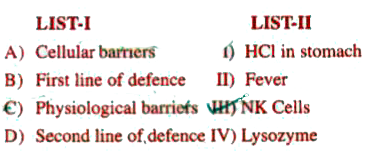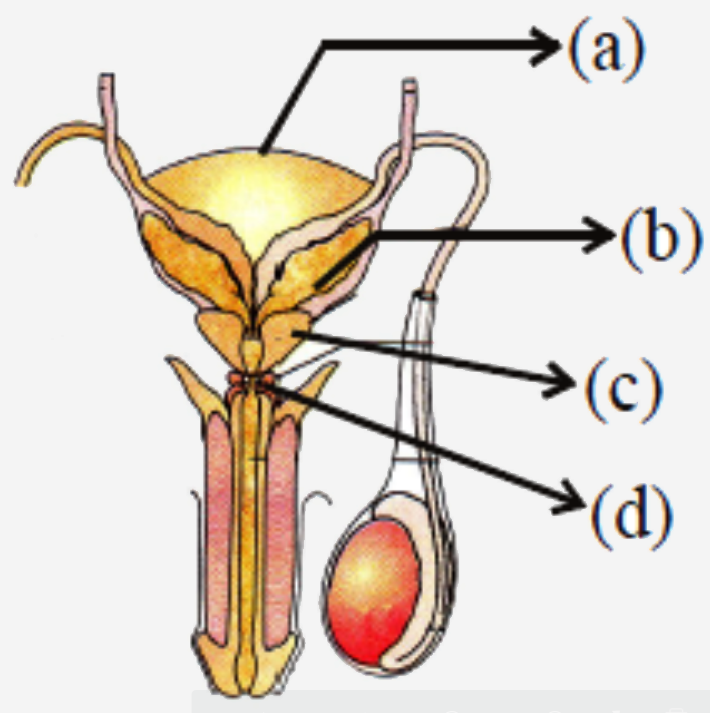Choose the correct options.
(a) Isotopes have same number of atomic number
(b) Isobars have same atomic weight
(c) Isotones have same number of neutrons
(d) In neutral isotope atoms number of electrons are same
The correct Answer is:A, B, C, D
To solve the question, we need to analyze each statement regarding isotopes, isobars, isotones, and neutral isotopes to determine which options are correct.
1. Understanding Isotopes:
- Isotopes are defined as atoms of the same element that have the same atomic number (number of protons) but different atomic mass numbers (number of neutrons).
- Example: Hydrogen has three isotopes: Protium (1H), Deuterium (2H), and Tritium (3H). All have the same atomic number (1) but different mass numbers (1, 2, and 3 respectively).
- Conclusion: The statement "isotopes have the same atomic number" is correct.
2. Understanding Isobars:
- Isobars are defined as atoms of different elements that have the same atomic mass number but different atomic numbers.
- Example: Argon (atomic number 18, mass number 40) and Potassium (atomic number 19, mass number 40) are isobars.
- Conclusion: The statement "isobars have the same atomic weight" is correct.
3. Understanding Isotones:
- Isotones are defined as atoms that have the same number of neutrons but different numbers of protons.
- Example: Sodium (atomic number 11, mass number 23) and Magnesium (atomic number 12, mass number 24) both have 12 neutrons (23-11=12 and 24-12=12).
- Conclusion: The statement "isotones have the same number of neutrons" is correct.
4. Understanding Neutral Isotope Atoms:
- Neutral atoms have the same number of protons and electrons, which means they are electrically neutral.
- Since isotopes are variants of the same element, they will have the same number of electrons in their neutral forms.
- Conclusion: The statement "in neutral isotope atoms, the number of electrons are the same" is correct.
Final Conclusion:
All four statements are correct:
1. Isotopes have the same atomic number.
2. Isobars have the same atomic weight.
3. Isotones have the same number of neutrons.
4. In neutral isotope atoms, the number of electrons are the same.
- Isotopes are defined as atoms of the same element that have the same atomic number (number of protons) but different atomic mass numbers (number of neutrons).
- Example: Hydrogen has three isotopes: Protium (1H), Deuterium (2H), and Tritium (3H). All have the same atomic number (1) but different mass numbers (1, 2, and 3 respectively).
- Conclusion: The statement "isotopes have the same atomic number" is correct.
- Isobars are defined as atoms of different elements that have the same atomic mass number but different atomic numbers.
- Example: Argon (atomic number 18, mass number 40) and Potassium (atomic number 19, mass number 40) are isobars.
- Conclusion: The statement "isobars have the same atomic weight" is correct.
- Isotones are defined as atoms that have the same number of neutrons but different numbers of protons.
- Example: Sodium (atomic number 11, mass number 23) and Magnesium (atomic number 12, mass number 24) both have 12 neutrons (23-11=12 and 24-12=12).
- Conclusion: The statement "isotones have the same number of neutrons" is correct.
- Neutral atoms have the same number of protons and electrons, which means they are electrically neutral.
- Since isotopes are variants of the same element, they will have the same number of electrons in their neutral forms.
- Conclusion: The statement "in neutral isotope atoms, the number of electrons are the same" is correct.
All four statements are correct:
1. Isotopes have the same atomic number.
2. Isobars have the same atomic weight.
3. Isotones have the same number of neutrons.
4. In neutral isotope atoms, the number of electrons are the same.
Topper's Solved these Questions
- MODERN PHYSICS - 2BOOK - DC PANDEY ENGLISHCHAPTER - MODERN PHYSICS - 2EXERCISE - Level 2 Comprehension Based
3 Videos
- MODERN PHYSICS - 2BOOK - DC PANDEY ENGLISHCHAPTER - MODERN PHYSICS - 2EXERCISE - Level 2 Subjective
10 Videos
- MODERN PHYSICS - 2BOOK - DC PANDEY ENGLISHCHAPTER - MODERN PHYSICS - 2EXERCISE - Level 2 Single Correct
13 Videos
- MODERN PHYSICS - 1BOOK - DC PANDEY ENGLISHCHAPTER - MODERN PHYSICS - 1EXERCISE - Level 2 Subjective
23 Videos
- NUCLEIBOOK - DC PANDEY ENGLISHCHAPTER - NUCLEIEXERCISE - C MADICAL ENTRANCES GALLERY
46 Videos
Similar Questions
Knowledge Check
Match the following

Choose the correct option:AA-3, B-2, C-1, D-4BA-4, B-1, C-3, D-2CA-2, B-4, C-1, D-3DA-4, B-1, C-2, D-3Match the following

Choose the correct option:AA-1, B-3, C-4, D-2BA-4, B-1, C-3, D-2CA-2, B-4, C-1, D-3DA-4, B-3, C-1, D-2
Choose the correct option(s) for the given sitution.

View SolutionObserve figures and choose the correct option.

View SolutionMatch the following and choose the correct option.

View SolutionMatch the following and choose the correct option.

View SolutionConsider the diagram given below and choose the correct option.

View SolutionStudy the following columns and choose the correct option.

View Solution

_CHE_E06_278.png) Choose the correct option.
Choose the correct option.